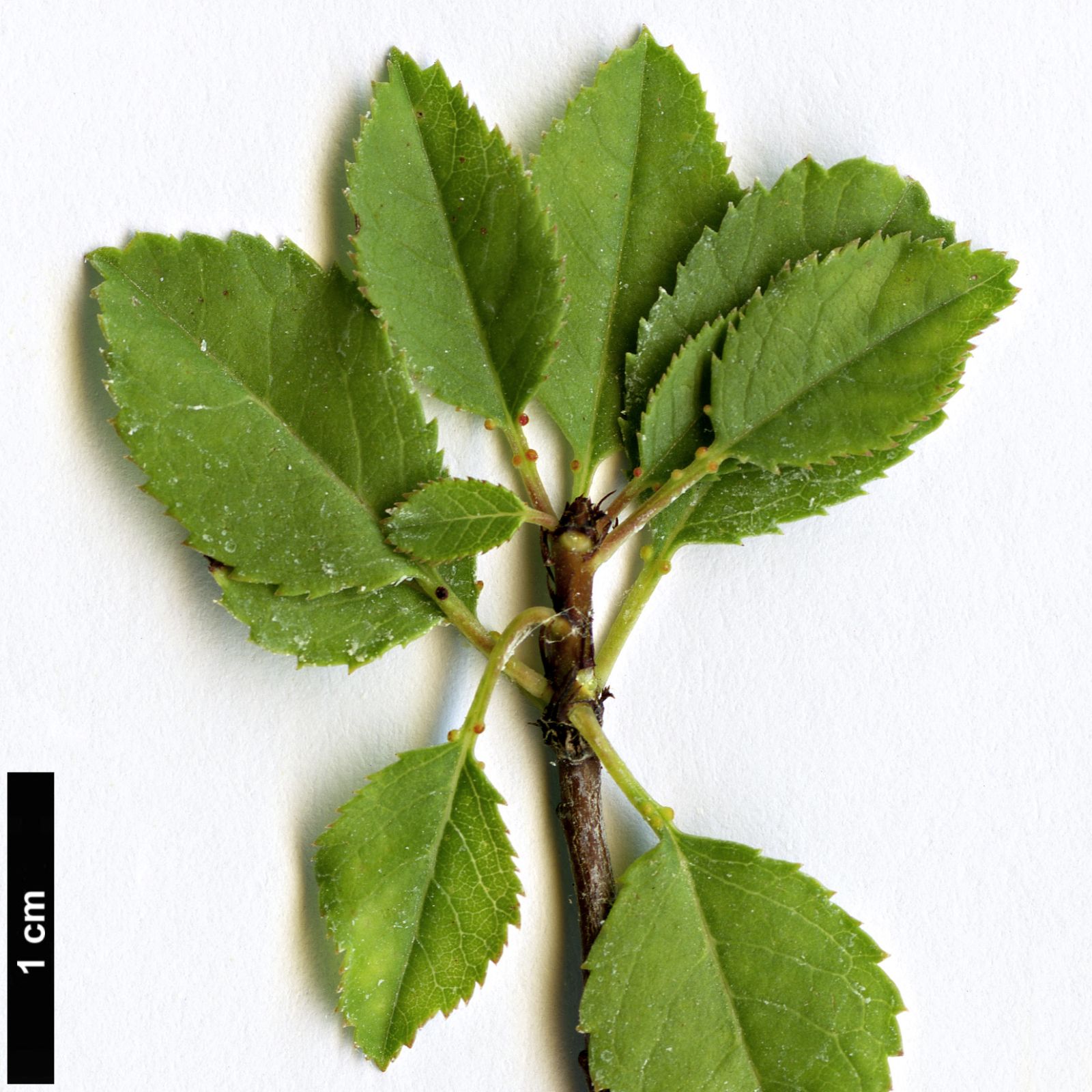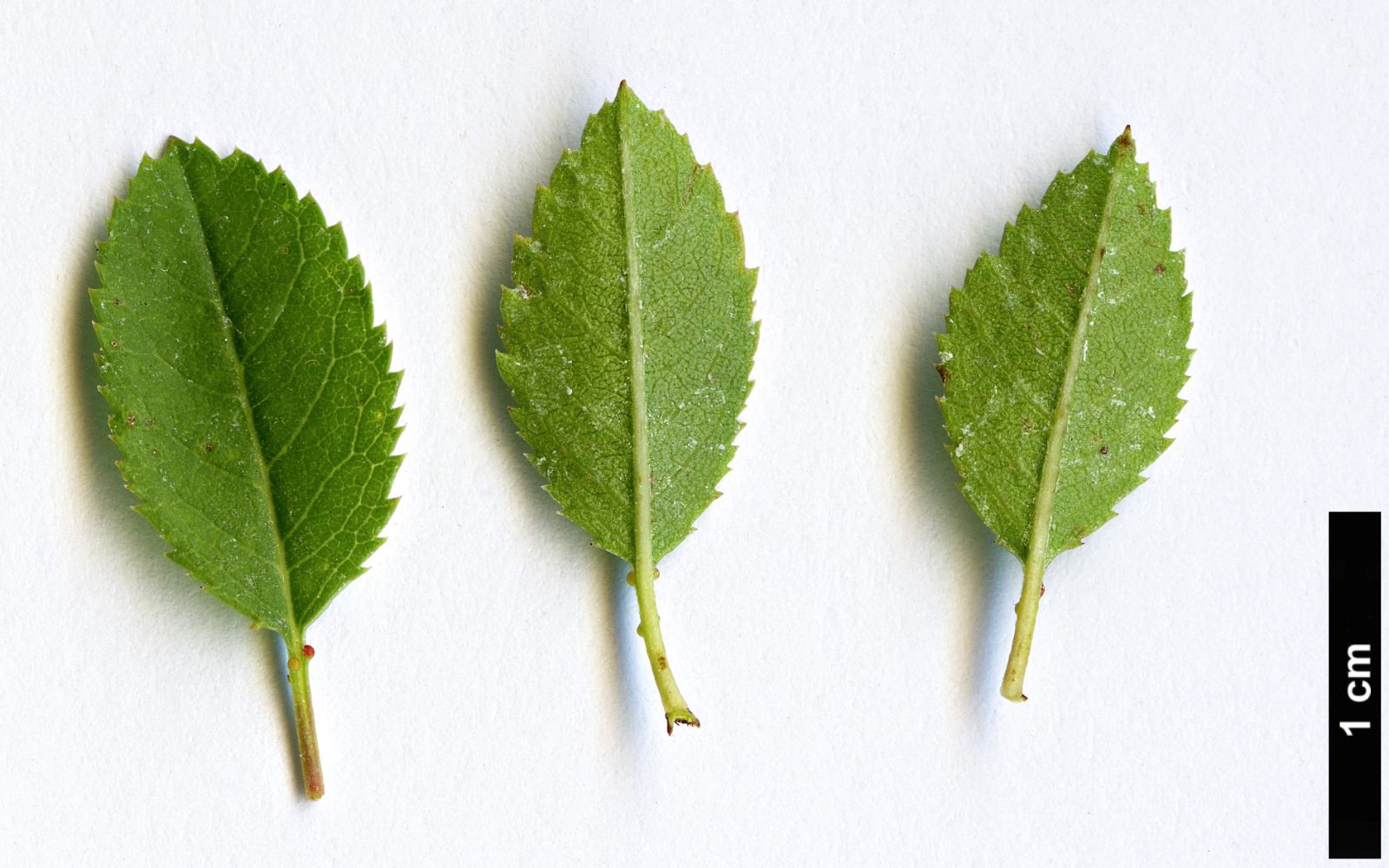Prunus microcarpa
Credits
Article from Bean's Trees and Shrubs Hardy in the British Isles
Recommended citation
'Prunus microcarpa' from the website Trees and Shrubs Online (treesandshrubsonline.
Genus
Synonyms
- Cerasus microcarpa (C. A. Mey.) Boiss.
Other taxa in genus
- Prunus alleghaniensis
- Prunus americana
- Prunus × amygdalo-persica
- Prunus amygdalus
- Prunus angustifolia
- Prunus apetala
- Prunus arabica
- Prunus argentea
- Prunus armeniaca
- Prunus avium
- Prunus besseyi
- Prunus brigantina
- Prunus campanulata
- Prunus canescens
- Prunus cantabrigiensis
- Prunus cerasifera
- Prunus cerasus
- Prunus cocomilia
- Prunus concinna
- Prunus conradinae
- Prunus consociiflora
- Prunus cornuta
- Prunus cuthbertii
- Prunus dasycarpa
- Prunus davidiana
- Prunus × dawyckensis
- Prunus dielsiana
- Prunus domestica
- Prunus dulcis
- Prunus emarginata
- Prunus × fontanesiana
- Prunus fruticosa
- Prunus glandulosa
- Prunus grayana
- Prunus himalaica
- Prunus hortulana
- Prunus humilis
- Prunus ilicifolia
- Prunus incana
- Prunus incisa
- Prunus jacquemontii
- Prunus kansuensis
- Prunus lannesiana
- Prunus laurocerasus
- Prunus litigiosa
- Prunus lusitanica
- Prunus maackii
- Prunus mahaleb
- Prunus maritima
- Prunus maximowiczii
- Prunus mira
- Prunus mugus
- Prunus mume
- Prunus nigra
- Prunus nipponica
- Prunus orthosepala
- Prunus padus
- Prunus pensylvanica
- Prunus persica
- Prunus pilosiuscula
- Prunus prostrata
- Prunus pumila
- Prunus rufa
- Prunus salicina
- Prunus sargentii
- Prunus serotina
- Prunus serrula
- Prunus serrulata
- Prunus sibirica
- Prunus × sieboldii
- Prunus simonii
- Prunus sogdiana
- Prunus speciosa
- Prunus spinosa
- Prunus ssiori
- Prunus subcordata
- Prunus subhirtella
- Prunus takesimensis
- Prunus tangutica
- Prunus tenella
- Prunus tomentosa
- Prunus triloba
- Prunus virginiana
- Prunus × yedoensis
A deciduous bush 3 or 4 ft high, of sturdy habit, with stiff, short-jointed branches and downy branchlets. Leaves broadly ovate, with a rounded base and acute apex, 1⁄2 to 1 in. long, nearly as much wide, coarsely and sharply toothed, with a few scattered hairs when young beneath; stalk 1⁄6 to 1⁄4 in. long. Flowers produced in spring in clusters of two or three, from buds and spurs of older branches, each on a downy stalk 1⁄3 in. long; the petals are rosy pink, the calyx cylindrical and glabrous. Fruits ovoid, nearly 1⁄2 in. long, red or yellow. Bot. Mag., t. 8360.
P. microcarpa (in the wide sense) has a wide range from S. and E. Anatolia eastward to N.W. Afghanistan, north to E. Transcaucasia and Transcaspia. It is an exceedingly variable species in habit, leaf-shape, colour and shape of fruit, and also in the amount of down on the leaves and twigs. The most downy forms can be distinguished as var. pubescens (Bornm.) Meikle. The plant described above was introduced to Kew in 1890, apparently from Asia Minor. The shape of leaf shown by this plant is usually correlated with downiness, though the leaves are in fact fairly glabrous.
Coming from a dry region with hot summers, P. microcarpa needs the sunniest position available. It is hardly worth garden room, except perhaps in the driest parts of the country.
The variations of this species are discussed by the Polish botanist K. Browicz in Rocz. Arb. Kornickie, No. 13 (1968), pp. 5–23 (in English).




